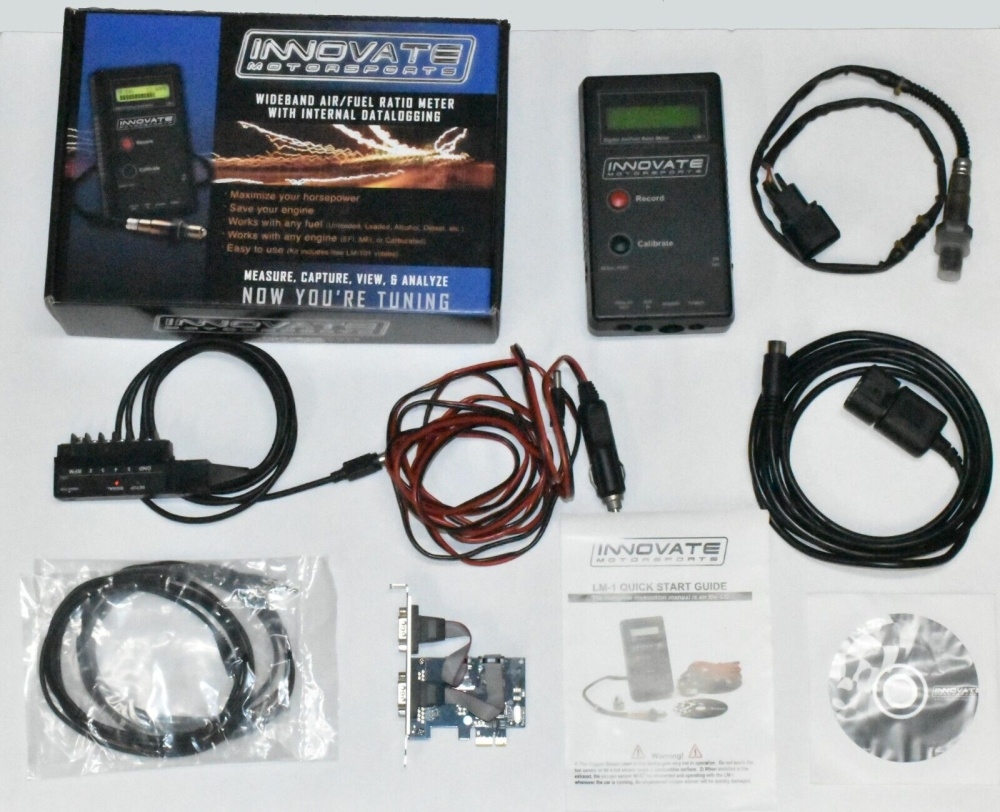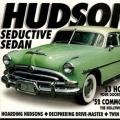Air/Fuel Ratio Gauge/Meter Invaluable for Tuning (IMHO!)
hey guys - i finally replaced the power adaptor for my Innovate LM-1 air/fuel ratio gauge to obtain mixture results for my '53 hornet twin-h
the old Innovate Lm-1 is read in the car and uses an O2 sensor attached with an optional exhaust clamp to provide air fuel #'s while driving, in order to get data under various real world driving conditions, i.e., at idle, under various loads, uphill, wide open throttle - (image attached)
today's units still use an O2 sensor, smaller, use app's on smart phones, store/show data differently, etc
i used this unit on my classic cars to set idle mixture, to check mixture while driving as above, especially looking for any lean running issues - i don't use any data download functions - i have found this to be an invaluable tool!
late last night, i obtained idle mixture results: while adjusting the carbs, after changing distributor advance, while driving up long steep hills/grades, when accelerating from a stop onto the freeway, when accelerating from between different higher speeds on the freeway, etc.
as a result, i could see the settings were pretty good, but much better mixture ratio's/drivability after some minor changes, and added confidence added for potential lean running issues
hope this info is helpful

the old Innovate Lm-1 is read in the car and uses an O2 sensor attached with an optional exhaust clamp to provide air fuel #'s while driving, in order to get data under various real world driving conditions, i.e., at idle, under various loads, uphill, wide open throttle - (image attached)
today's units still use an O2 sensor, smaller, use app's on smart phones, store/show data differently, etc
i used this unit on my classic cars to set idle mixture, to check mixture while driving as above, especially looking for any lean running issues - i don't use any data download functions - i have found this to be an invaluable tool!
late last night, i obtained idle mixture results: while adjusting the carbs, after changing distributor advance, while driving up long steep hills/grades, when accelerating from a stop onto the freeway, when accelerating from between different higher speeds on the freeway, etc.
as a result, i could see the settings were pretty good, but much better mixture ratio's/drivability after some minor changes, and added confidence added for potential lean running issues
hope this info is helpful

0
Comments
-
what were some of your results on your real driving?0
-
thanks - my hornet has a wildrick built 308, '56 block, larger intake, wildrick head, more cam/compression, headers into single 2.5" exhaust and hydramatic
- i'm at sea level here in seattle
- my initial idle mixture was 13.5:1 so i richened up to 12.5:1 - all readings were surprising smooth and adjusted well to changes throughout - in nearly all conditions, the mixture varied from 11:1 to 13.5:1 staying mainly in the mid 12:1 range
- at highway speeds accelerating with slight throttle from 55 to 65, the mixture leaned to nearly 15:1 and felt a bit surgy - (at high speeds turbulent air screws up readings with the exhaust mount) - i reduced the total timing advance sequentially, and at about 6 degrees total advance nothing leaner than 14.5:1 under the slight throttle condition with the remainder in the mid 12:1 range
- if i had webers, i would know how to richen the top range w/jets and w/o changing timing - i'm still figuring out the carters, which run so well, i'm not inclined to mess with them
- hope this helps0 -
Great info above ---thanks for posting!Optimal A/F ratios on performance Chev V8's are:14.5 -15 IDLE14 -15.5 CRUISE12.7-13.2 WOTWhat A/F ranges we should target on our Hudson I6s?Anyone here with an I6 + EFI might shed some light on the answer. Any Hamilton EFIs users here?0
-
What are these units selling for?0
-
regarding air/fuel mixtures, look online/get info from pros - conventional wisdom is do not run too lean, especially for any length of time - if you hear pinging/detonating, that's engine damage - whether it's too much advance or a carb lean issue, etc., it needs to be addressed immediately
approx 14.7:1 is considered perfect air/fuel ratio, but for cars in real world driving, performance driving, especially older cars, IMHO running richer in the 12.5:1 to 13.5:1 range is much safer for the engine, head/piston temps, etc
i drive my collector cars (when running!) thousands of miles per year - i've had some very bad experiences with burned pistons/heads due to lean running issues - i've tested/tuned dual webers IDF's, dual zenith NDIX's, bosch MFI, CIS FI, D-Jet FI, and now carter WA-1's, resulting in no problems and lots more confidence when driving these old cars
i bought my old innovate lm-1 used w/ accessories for under $200, but years ago - the image above is from a now active ebay listing at $180 (no affiliation) - the exhaust clamp now runs new for about $80 - the O2 sensor burns out after a while - a new bosch sensor is under $50 - the lm-1 isn't made anymore - new models, either handheld, by gauge or smart phone run in the $200-$400 range - some new models also have 2 O2 sensors for dual exhaust set ups
hope this helps0 -
When this thread started I remembered a YouTube Video that explains this process and where to get the pieces, hope this adds to the content ... Ken
https://www.youtube.com/watch?v=YiUDltHKnLE
0
Categories
- 36.9K All Categories
- 113 Hudson 1916 - 1929
- 20 Upcoming Events
- 92 Essex Super 6
- 28.6K HUDSON
- 574 "How To" - Skills, mechanical and other wise
- 995 Street Rods
- 151 American Motors
- 178 The Flathead Forum
- 49 Manuals, etc,.
- 78 Hudson 8
- 44 FORUM - Instructions and Tips on using the forum
- 2.8K CLASSIFIEDS
- 608 Vehicles
- 2.2K Parts & Pieces
- 77 Literature & Memorabilia
- Hudson 1916 - 1929 Yahoo Groups Archived Photos
